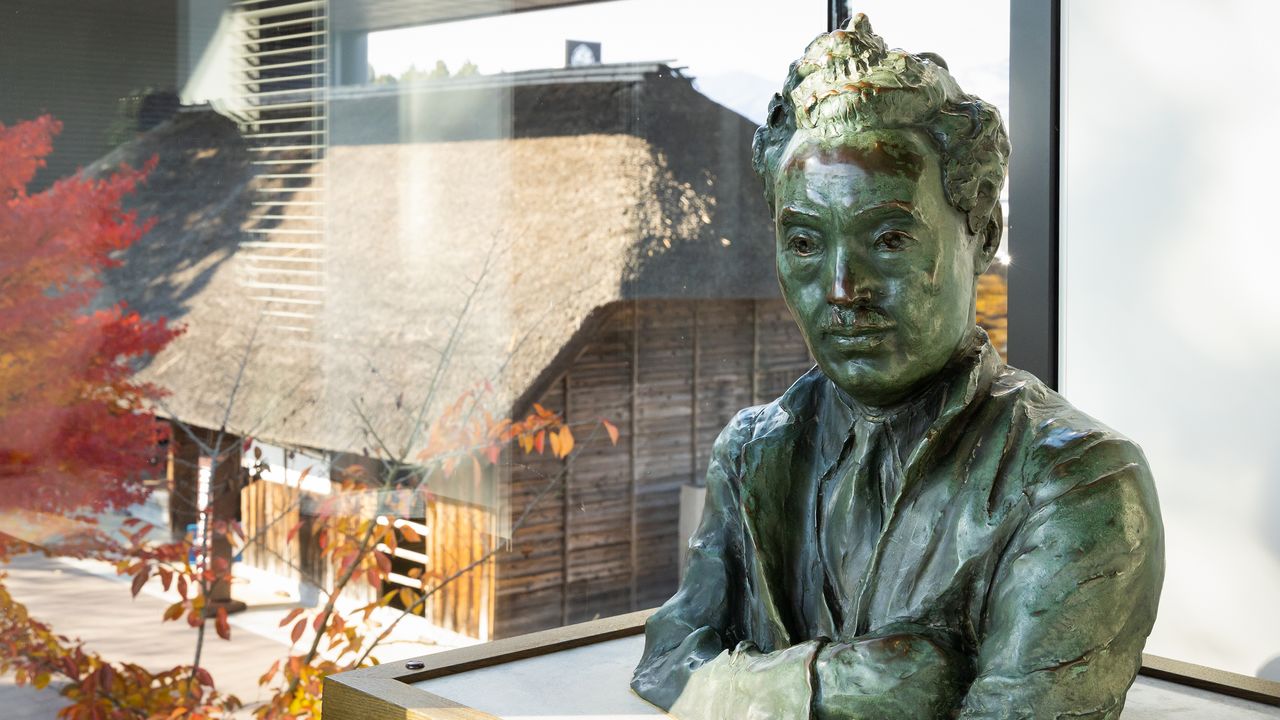
Birthplace of a Bacteriologist: A Visit to the Hideyo Noguchi Memorial Museum in Inawashiro, Fukushima
Guideto Japan
Travel History Health- English
- 日本語
- 简体字
- 繁體字
- Français
- Español
- العربية
- Русский
From the Shore of Inawashiro to Global Fame
The Japanese bacteriologist Noguchi Hideyo (1876–1928) was born into an impoverished family in a farming hamlet called Sanjōgata in what is now the town of Inawashiro on the northern side of Fukushima Prefecture’s Lake Inawashiro. He rose from this poverty—and from a devastating burn on his left hand suffered when he fell into the home’s firepit as a toddler—to display talent for medicine and bacteriological research. This would take him far from the shores of Inawashiro to pursue a bright career in the United States, doing research also in Europe, South America, and Africa to clarify the causes of afflictions from syphilis to yellow fever. He would be considered for the Nobel Prize in Medicine three times before disease cut his life short in Accra, Ghana.
Today resting in New York’s Woodlawn Cemetery and commemorated around the world in locations like Ghana’s Noguchi Memorial Institute for Medical Research, this historical figure is also remembered in Inawashiro, where the home in which he was born stands to this day, its thatched roof protected from the elements by the overarching structure of the Hideyo Noguchi Memorial Museum.
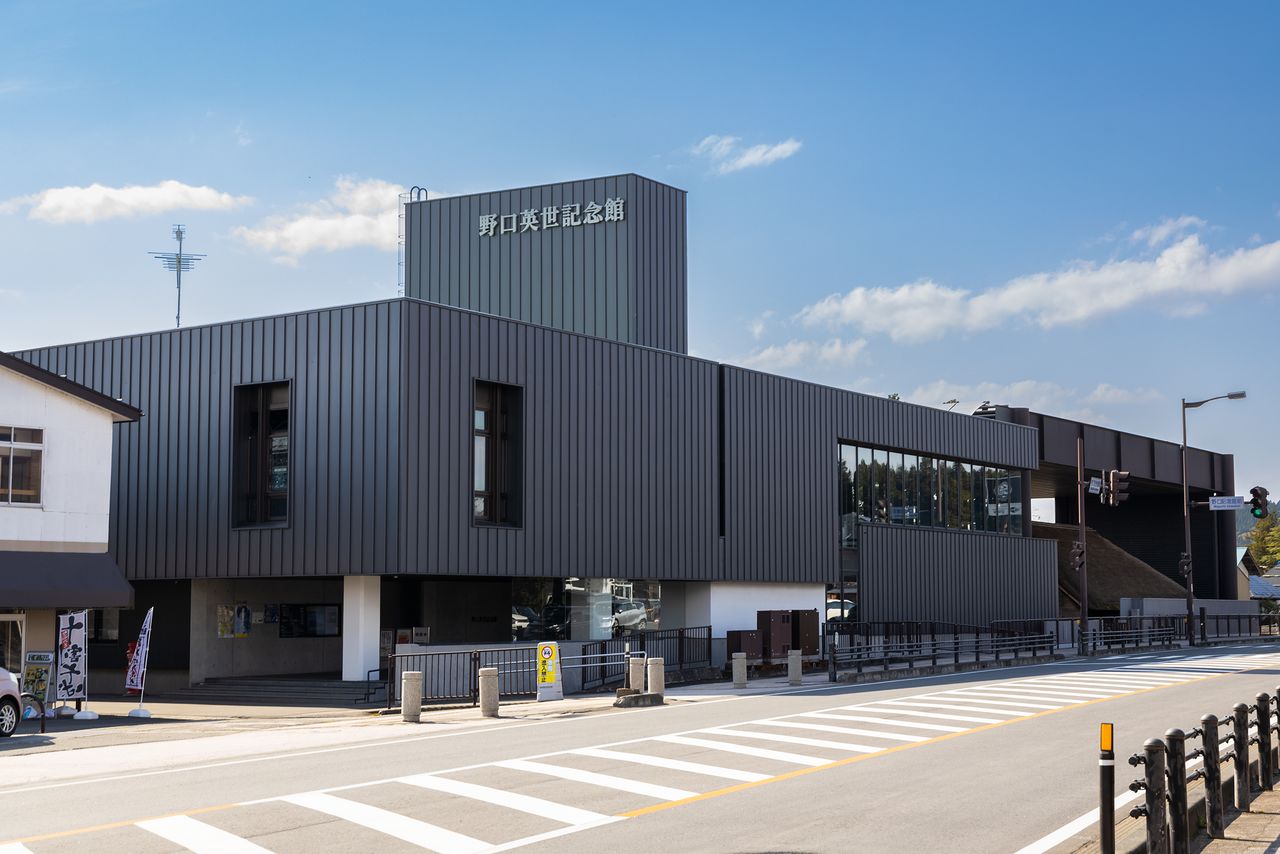
The museum stands just off of National Route 49. The structure’s space on the right side shelters the farmhouse where Noguchi was born in 1876.
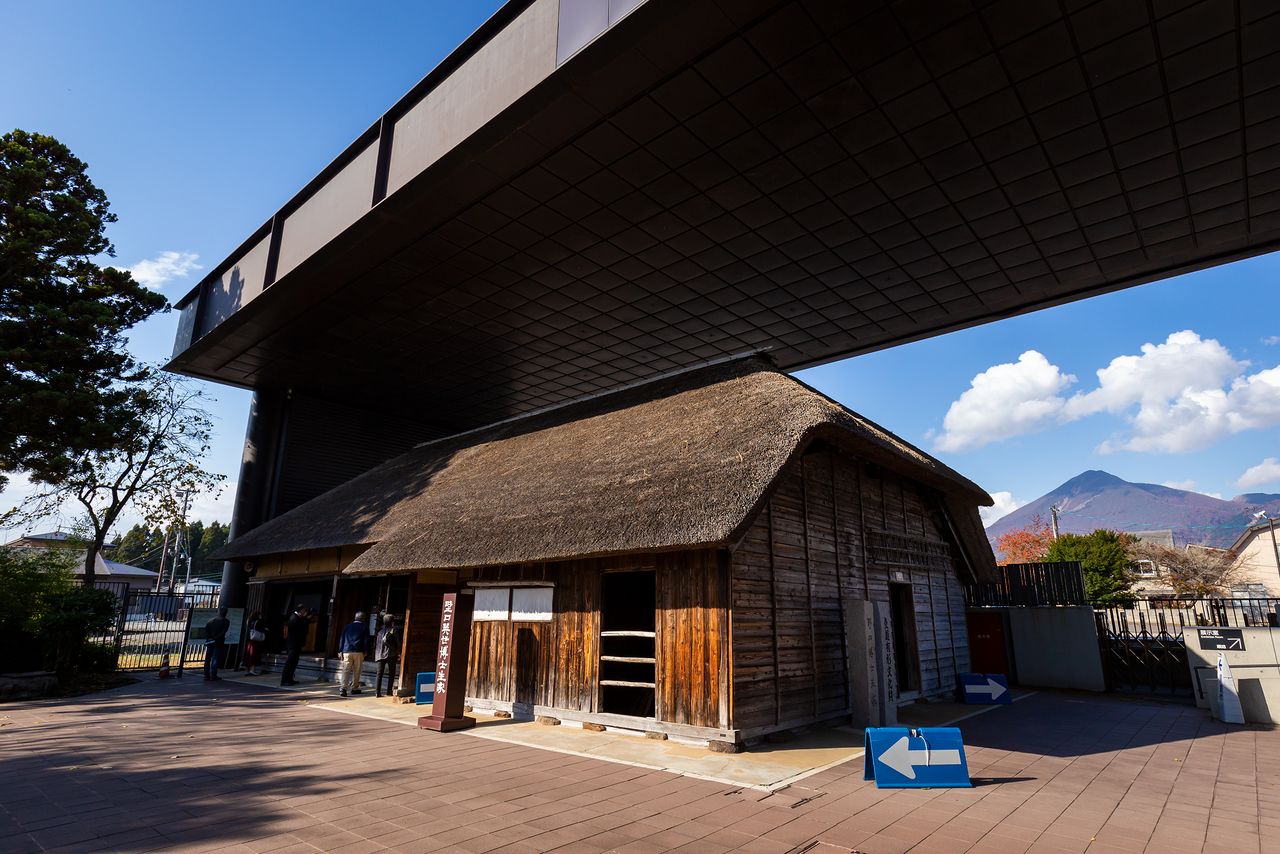
The Noguchi home, with the protective roof overhead and the 1,816-meter peak of Mount Bandai in the background.
A visit to the museum begins, appropriately, with the house itself. Here Noguchi Seisaku (his birth name) was born; at 18 months he tumbled into the fire pit here, badly burning his left hand and lower arm on the smoldering coals. This was a catastrophic injury for someone expected to work in local fields, and his mother Shika urged the boy to pursue learning instead.
Another highlight of this main room is the message young Seisaku carved into one of the pillars when he left for Tokyo in 1896 to take the first stage of his medical licensing exams: Kokorozashi o ezareba futatabi konochi o fumazu, “I will not set foot in this place again until I have achieved all my goals.”
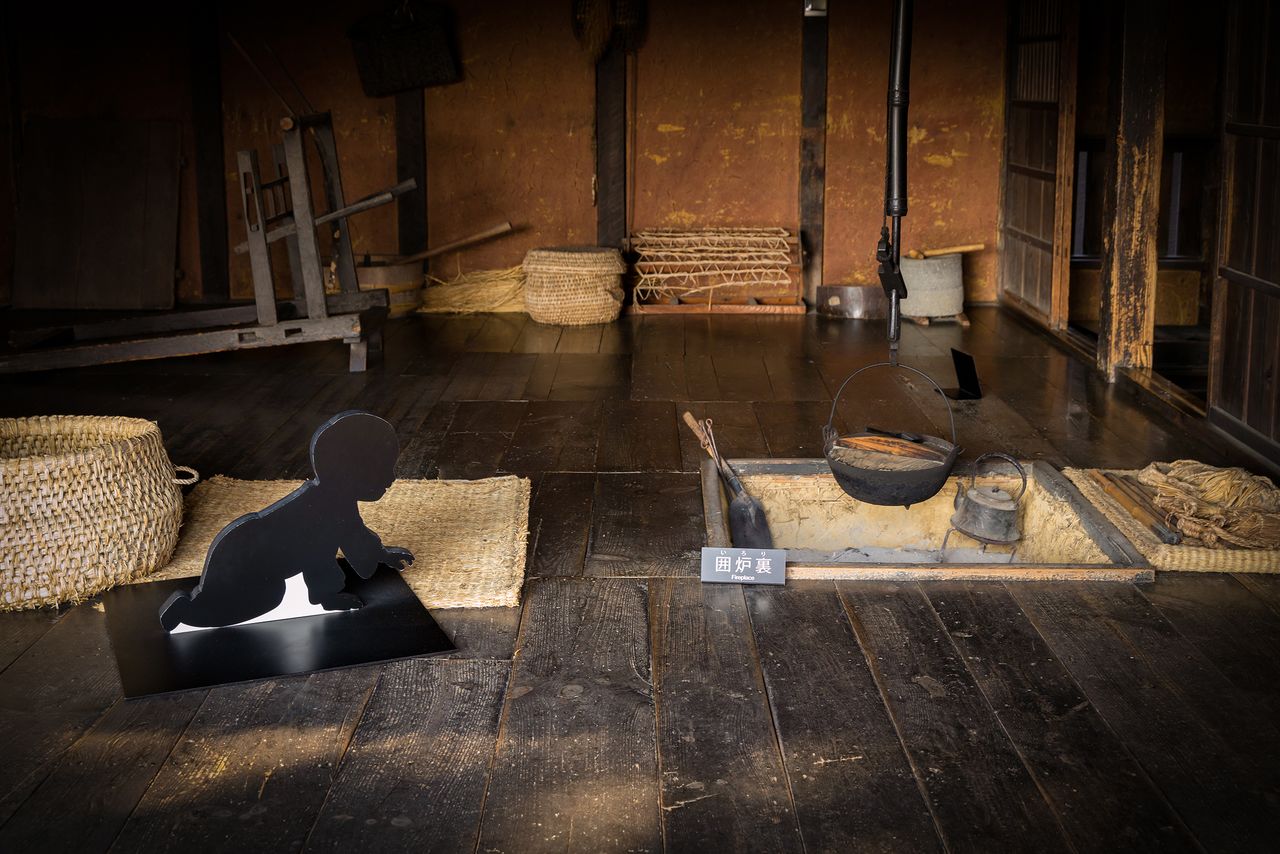
At right, the firepit that would change the course of the young Noguchi’s life.
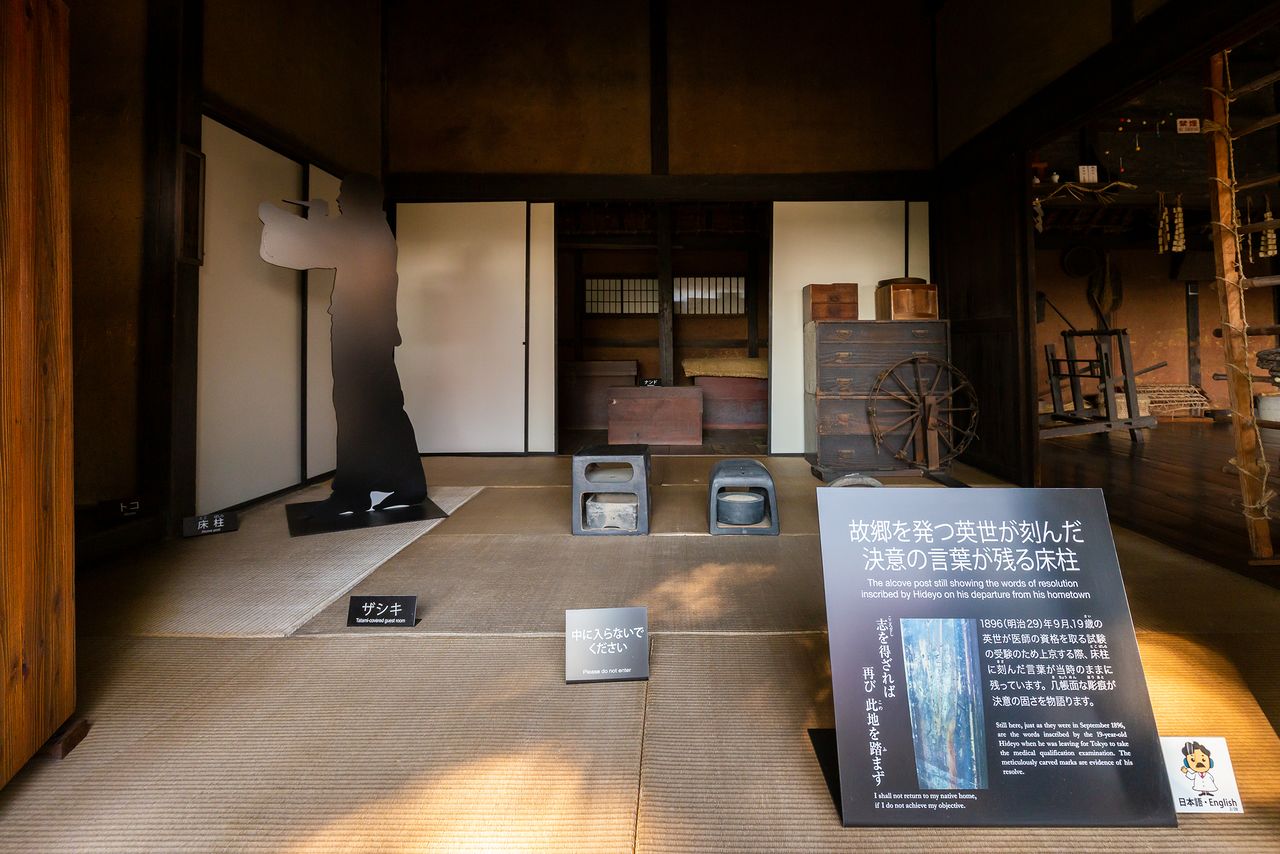
The pillar at left, indicated by the man-shaped sign, still bears the marks of the young Noguchi’s knife.
Valuable Friends and Benefactors
Enter the main museum structure, and you pass through permanent exhibit rooms titled “Hideyo’s Life and Times,” “The Real Hideyo,” and “The Doctor’s Laboratory.” Each section displays valuable photographs and other materials, along with the scientist’s own treasures possessions, to illuminate his life.
Playing a major part in that life were the people he met along the way, without whose support he would not have been able to amount to much.
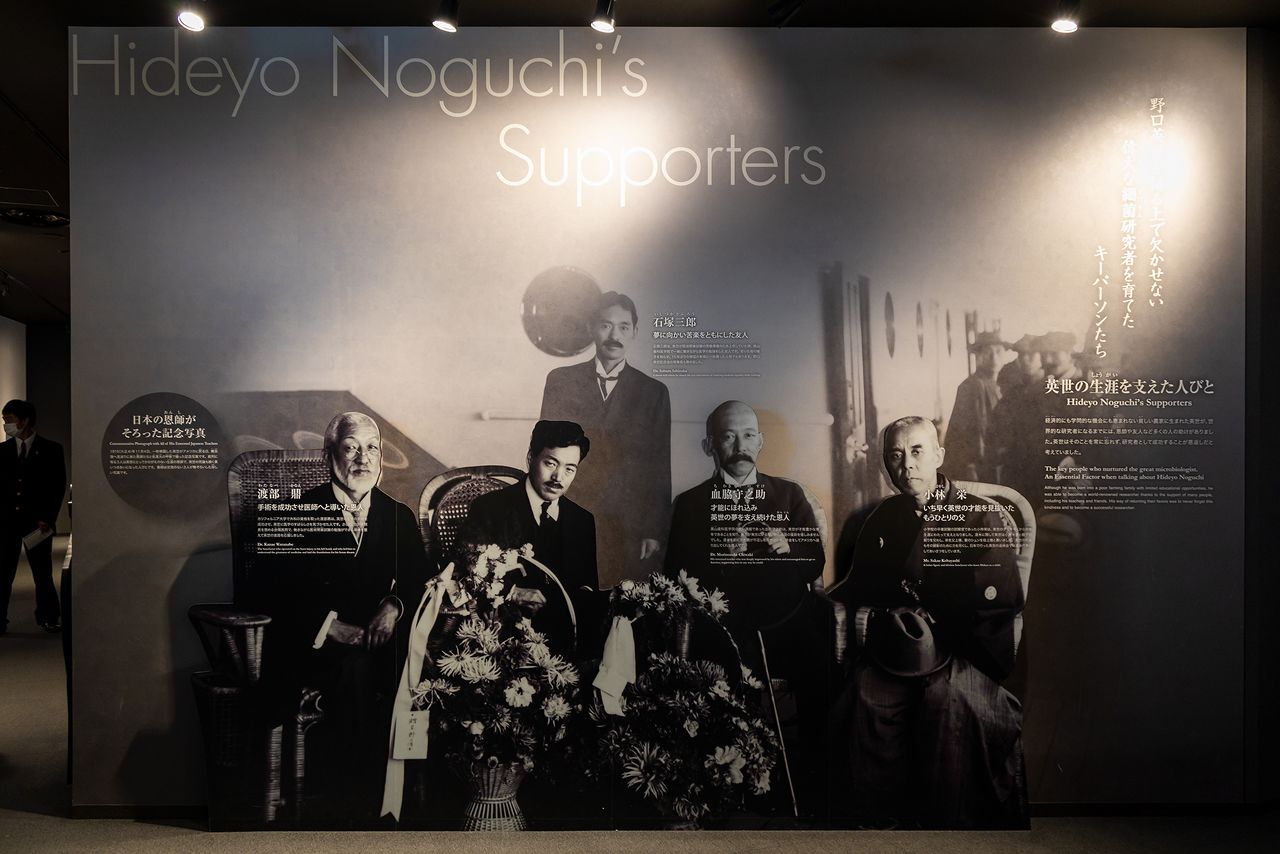
Noguchi, seated at second from left, poses with key figures in his life in 1915, during his only trip back to Japan after leaving for the United States in 1900. From the left are Watanabe Kanae, the doctor who first operated on Noguchi’s burned hand; Chiwaki Morinosuke, a dentist who served as mentor and sponsor to Noguchi; and Kobayashi Sakae, an educator who opened the path to learning for the young Aizu boy. At the rear stands Ishizuka Saburō, Noguchi’s lifelong friend and colleague at the Takayama College of Dentistry, where Chiwaki secured him a job.
Facing a hard life and the need to farm for a meager living, Noguchi was saved early on by Kobayashi Sakae, head teacher at the Inawashiro Higher Elementary School, equivalent to a junior high school in today’s system. Perceiving the young Noguchi’s academic aptitude, Kobayashi in 1889 arranged for him to continue studying at his school. He provided financial assistance to help cover the cost of this schooling and, when Noguchi turned 16, raised money to pay for an operation that would give him some use of his ruined left hand.
The surgeon handling this operation was Watanabe Kanae, who had studied medicine in the United States. Noguchi, inspired by the movement the procedure had returned to his fingers, determined to enter the path of medicine himself. He took a position as receptionist and assistant at Watanabe’s Kaiyõ Clinic, where he began learning the fundamentals of medical science.
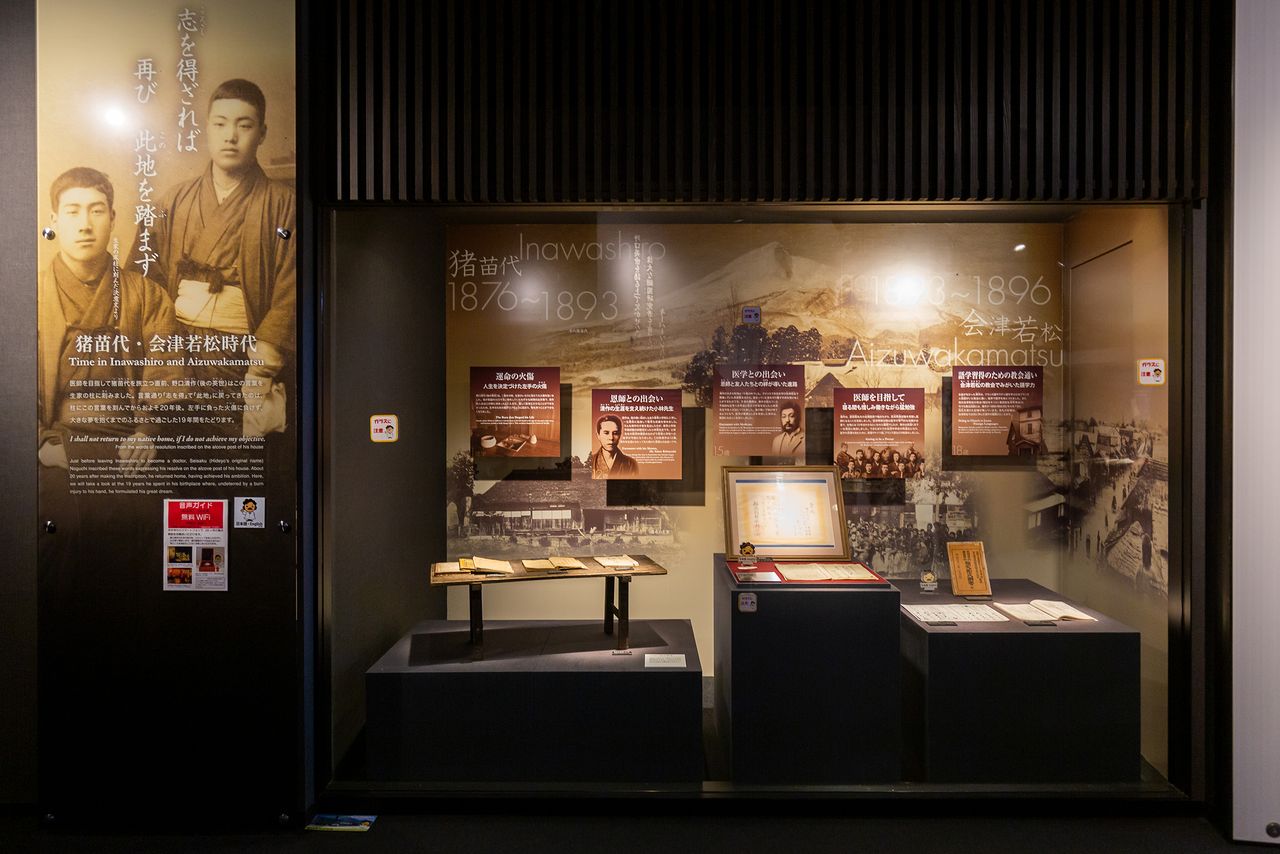
A museum display detailing Noguchi’s time in Inawashiro and Aizu-Wakamatsu. The large photo at left, the first ever taken of Noguchi, shows him standing at right, his hand swaddled in post-operation linen, along with his friend Yago Yasuhei.
Kobayashi loaned Noguchi money to travel to Tokyo and take his medical licensing examinations. After passing the first stage of the exams in 1896, though, he took up a dissipate lifestyle in the capital and burned through this money in short order. He next came to rely on Chiwaki Morinosuke, a friend of Watanabe who worked as a dentist at the Takayama College of Dentistry in Tokyo. With a room at the school’s boarding house and money to pay for his preparations for the second phase of the tests, courtesy of his new benefactor, Noguchi focused on his studies and passed the government exams in 1897, earning his medical license.
This was to be something of a pattern in Noguchi’s life. He would obtain money for some purpose—traveling abroad to further his research, for example—only to spend it all and go hat in hand to Kobayashi and Chiwaki once again. His sloppy approach to life makes him less exemplary than the hard-working medical researcher portrayed in many biographies, and it is clear he would not have gone far in life without the help of these reliable figures.
Morita Teppei, a curator at the Hideyo Noguchi Memorial Museum, notes: “Indeed, great deeds like Noguchi’s are never the product of a single person. His family in particular was so poor that the other villagers were reported to say, ‘If Seisaku becomes a doctor, the sun is likely to come up in the west!” But Noguchi was also the kind of person never to forget the debts he incurred—he was always filled with gratitude for the love of his mother, Shika, and the aid received from his benefactors, and repaid them as best he could.” In fact, when Noguchi returned to Japan after achieving great things in the United States and Europe, he took Kobayashi and his wife, along with his mother, on a trip through Japan’s western Kansai region; when Chiwaki visited him in America, he assiduously looked after his needs for a full month. “We hope our displays at the museum can convey some of this importance of the human connections in his life.”
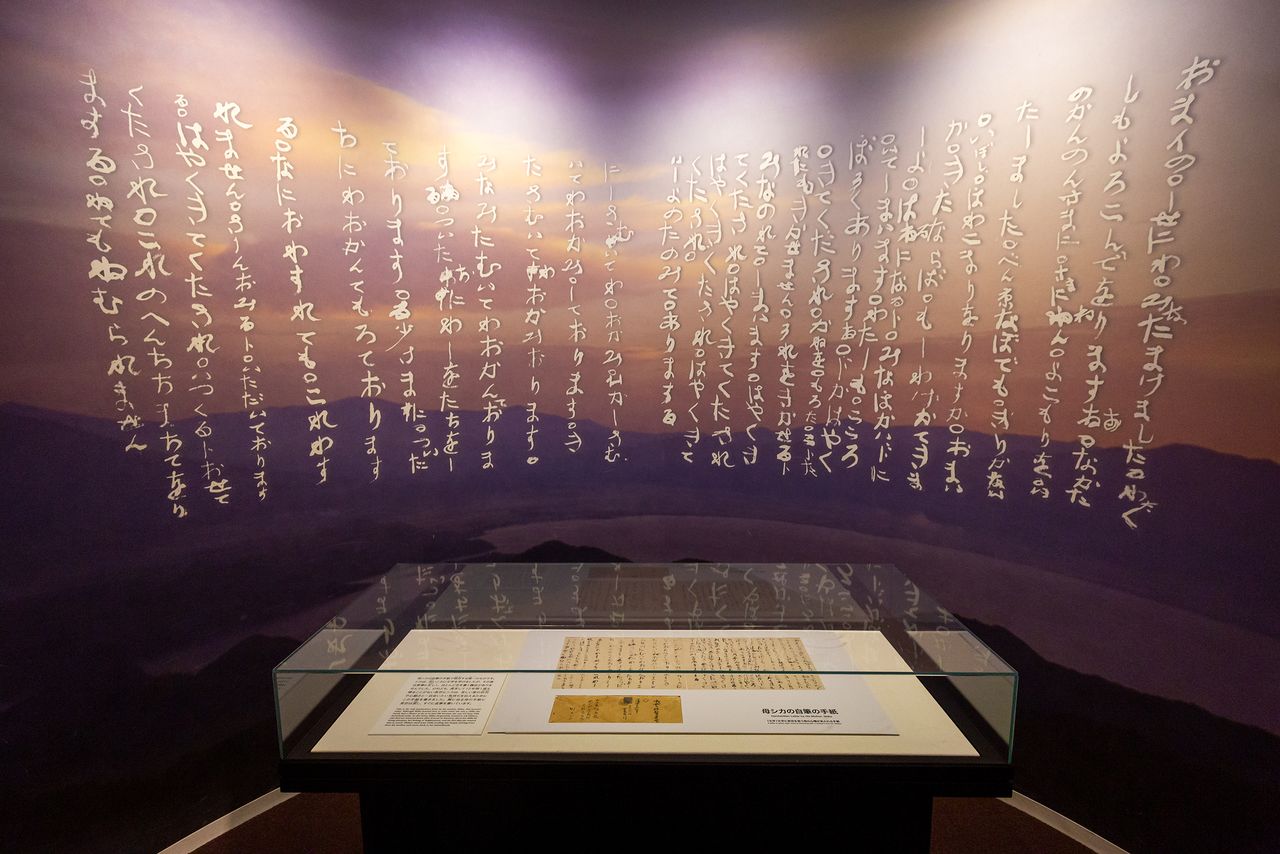
Noguchi always kept this letter from Shika, his mother, as a memento; its plaintive urging that he come home to Japan convinced him to return in 1915.
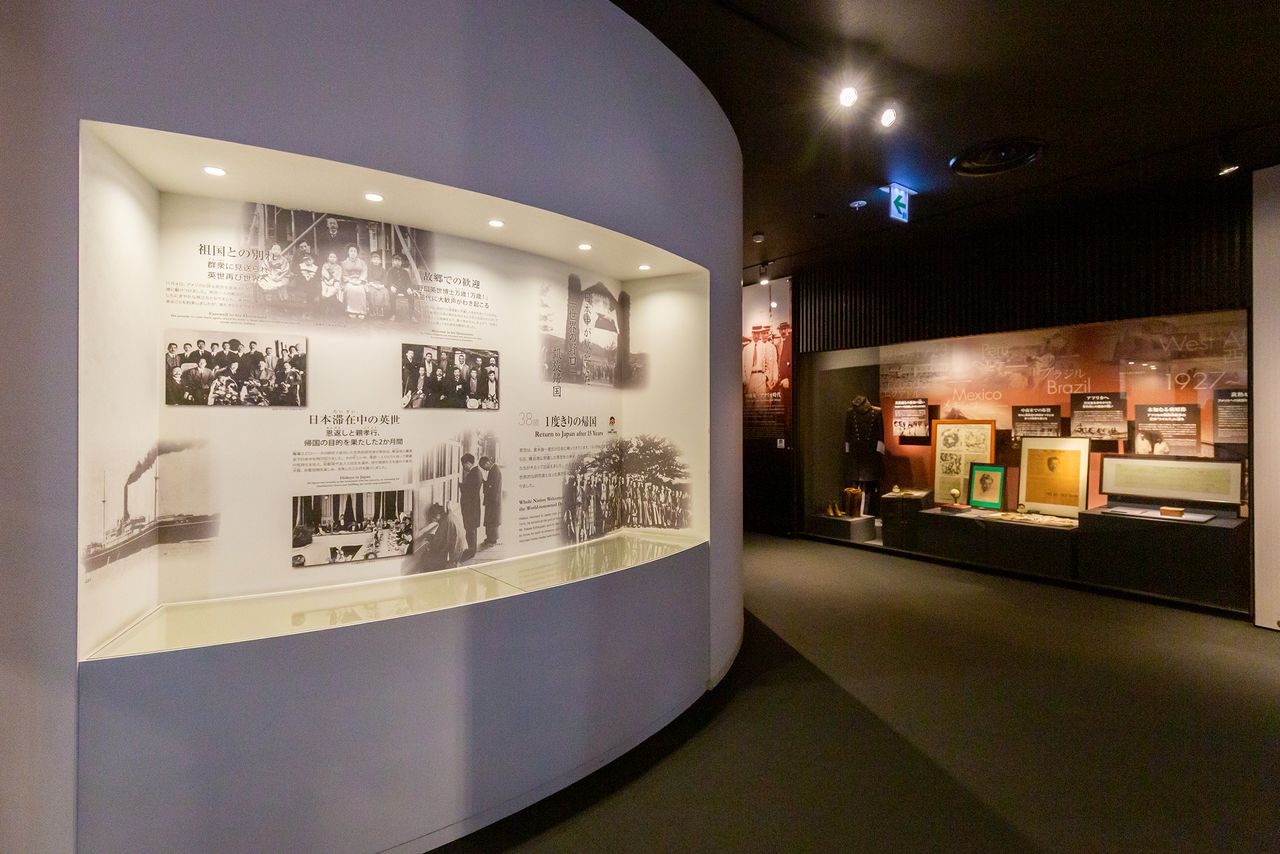
Photographs depicting the hero’s welcome Noguchi enjoyed all around Japan when he came back in 1915.
Work Worth a Nobel Nomination
His hand’s range of motion still limited, Noguchi Seisaku decided to pursue medical research instead of a practice as a physician. In 1898, he took a position at the Kitasato Institute, an infectious disease research center run by Kitasato Shibasaburō.
And in the following year, he took a new name for himself. Noguchi is said to have been shocked at reading Tōsei shosei katagi (Portrait of a Contemporary Student) by Tsubouchi Shōyō, finding in it a dissolute medical student from the countryside named Nonoguchi Seisaku and worrying that he had provided the model for this no-good character. His old teacher Kobayashi suggested Hideyo, and this was the name he went with from 1899 onward.
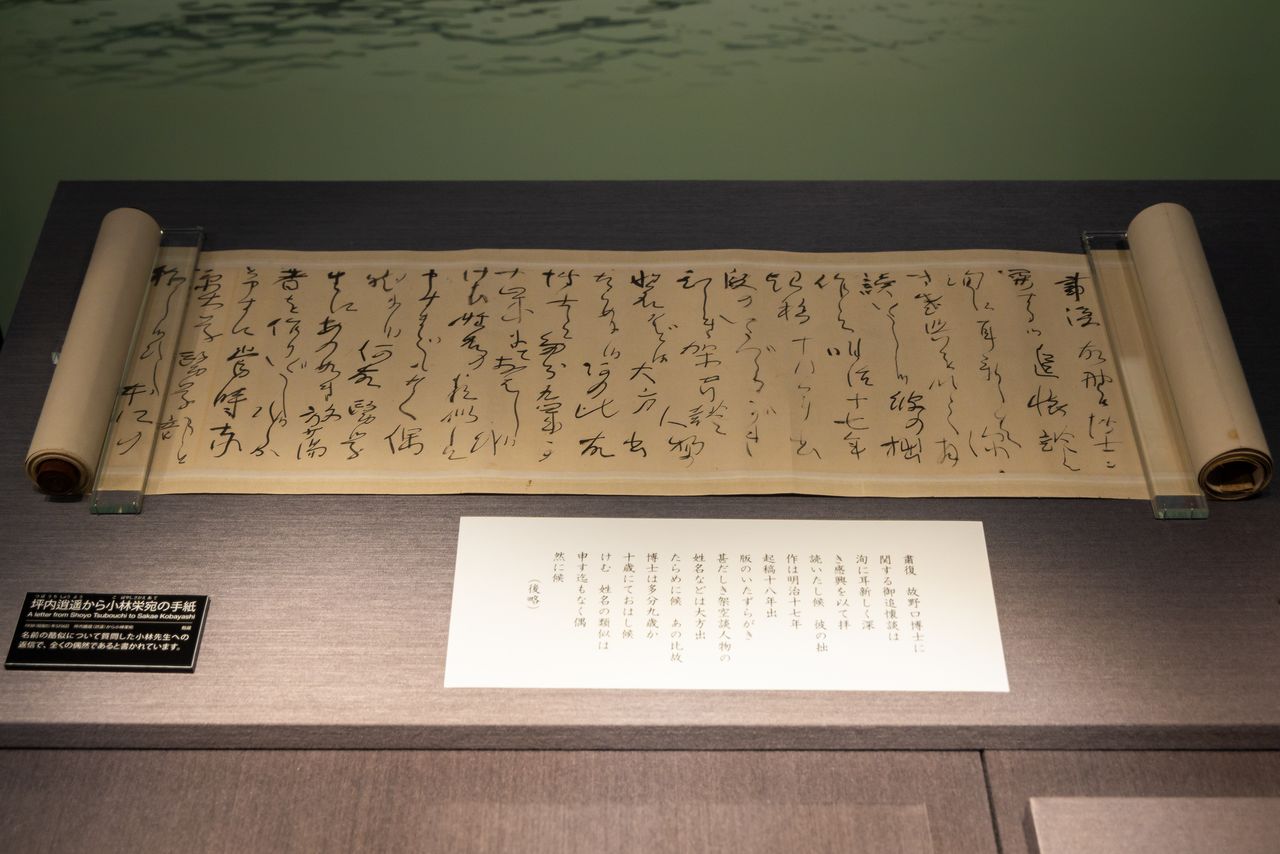
A letter from Tsubouchi Shōyō to Kobayashi Sakae, penned after Noguchi’s death, explains that his book had been written when Noguchi was only nine or so, and was not patterned after his behavior in Tokyo later in life.
Also in 1899, Noguchi had another fateful encounter when the American bacteriologist Simon Flexner came to Japan. A teacher of pathology at Johns Hopkins University (and from later that year, the University of Pennsylvania), Flexner wanted to visit the Kitasato Institute, and Noguchi, with his superior language skills, was tapped to show him around. At the end of the following year, Noguchi would follow Flexner back to the United States, with little more than a letter of introduction from Kitasato himself, and succeed in obtaining a position as his research assistant.
Flexner put Noguchi to work researching snake venom. He threw himself into the task, sleeping little, and saw his hard work recognized, including with an invitation to do research at the Statens Serum Institut in Copenhagen. In 1904, when Flexner was picked to serve as the first head of the Rockefeller Institute for Medical Research in New York, he called Noguchi to join the research staff. He quickly produced results, obtaining and isolating a sample of the Treponema pallidum spirochete that causes syphilis. His energy and work ethic inspired his Rockefeller colleagues to nickname him the “human dynamo.”
In 1914, the year he was made a full lifetime member of the Rockefeller Institute, he was also placed into consideration for a Nobel Prize in Medicine. Having firmly established himself in a successful research career, he judged the time right to return to Japan for the first time in 15 years.
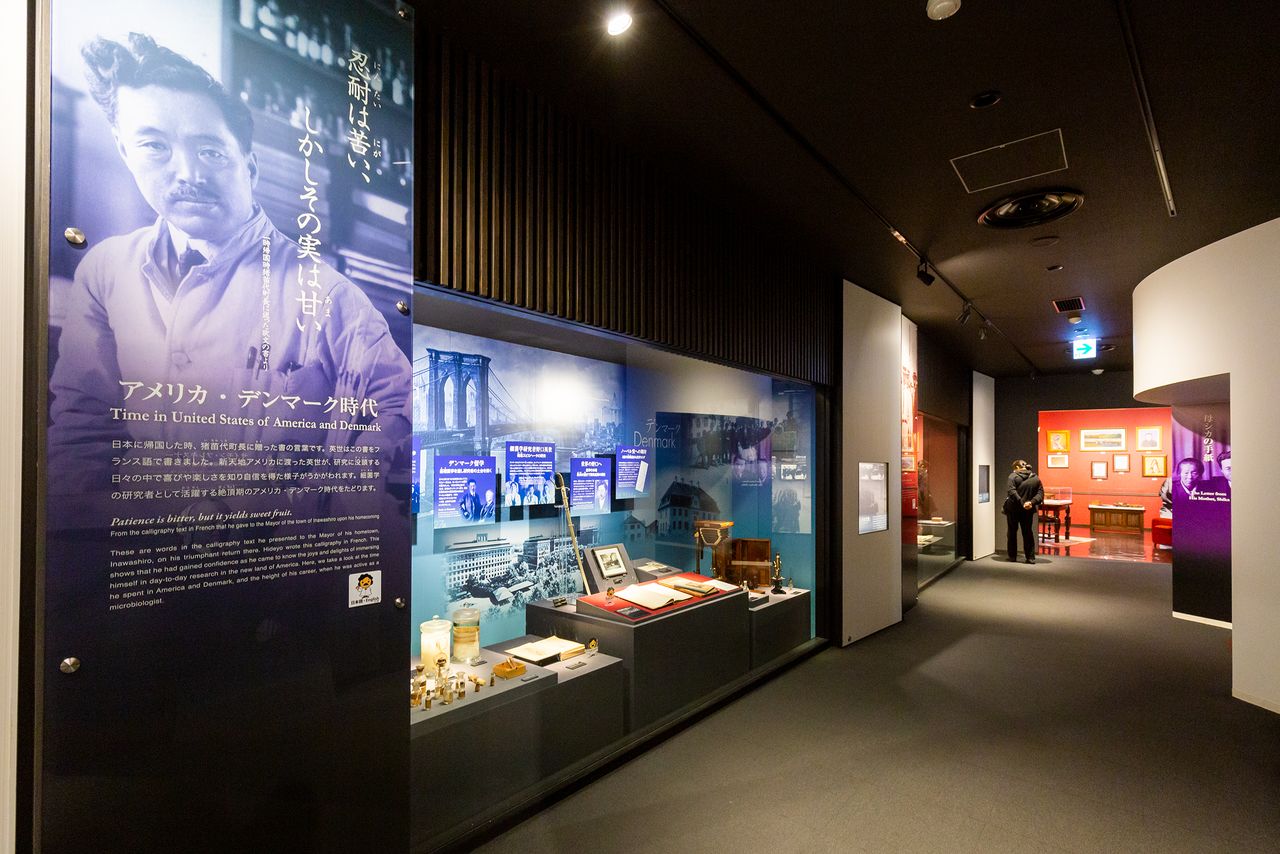
Displays chronicle his years of success in the United States and Denmark.
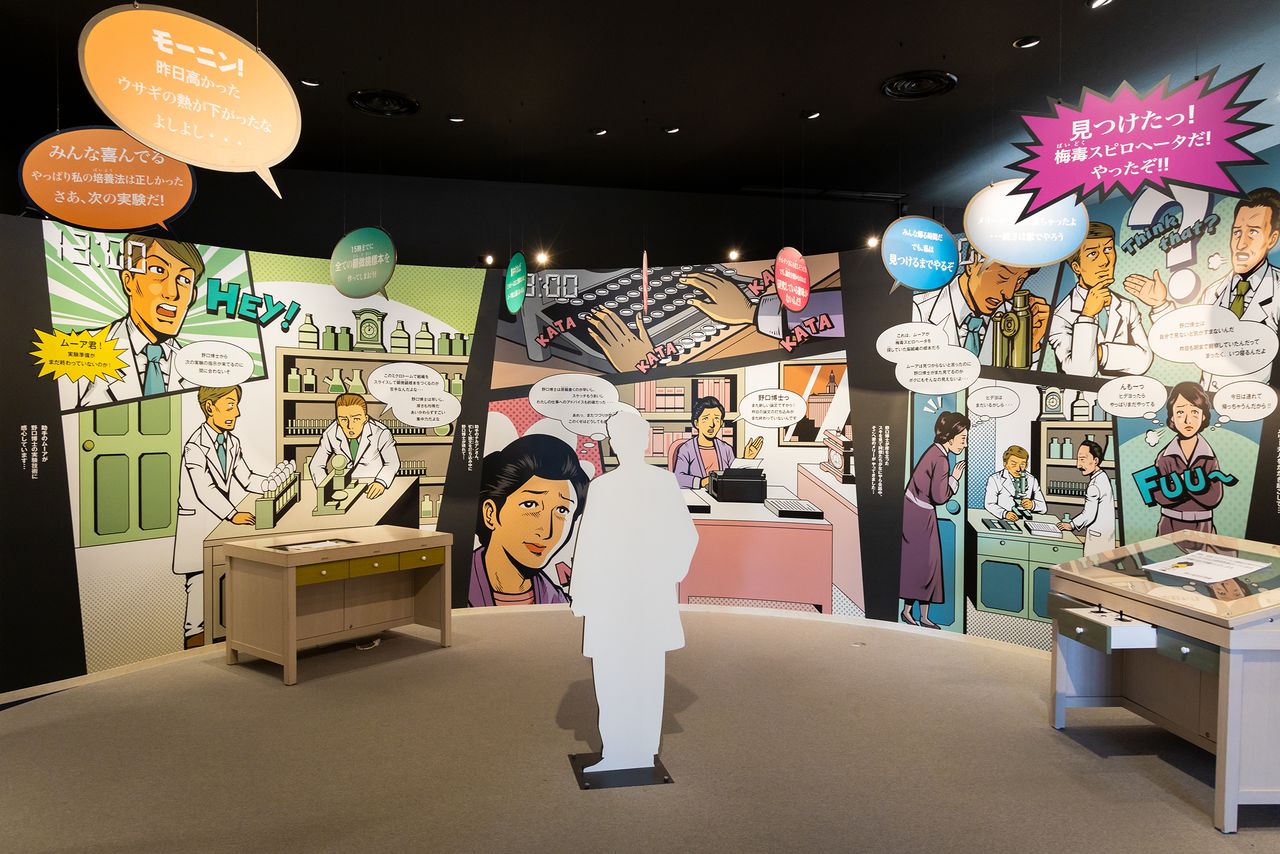
“A Day in the Life of Dr. Noguchi” chronicles his activities in the laboratories of the Rockefeller Institute.
Taking On Deadly Disease
It was soon after this that Noguchi identified the next foe he would take on: yellow fever. His research on this fearsome disease culminated in his announcement in Ecuador in 1918 that he had identified its pathogen as the bacterium Leptospira icteroides. The “Noguchi vaccine” was swift to follow, and for a time he was feted globally as a hero of the battle against this disease.
He continued his work in Latin America thereafter, traveling to Mexico, Peru, and other countries to research diseases there. Eventually, though, word came from Africa that outbreaks of yellow fever there were not responding to his vaccine, and academic publications began to pile up arguing against his L. icteroides thesis.
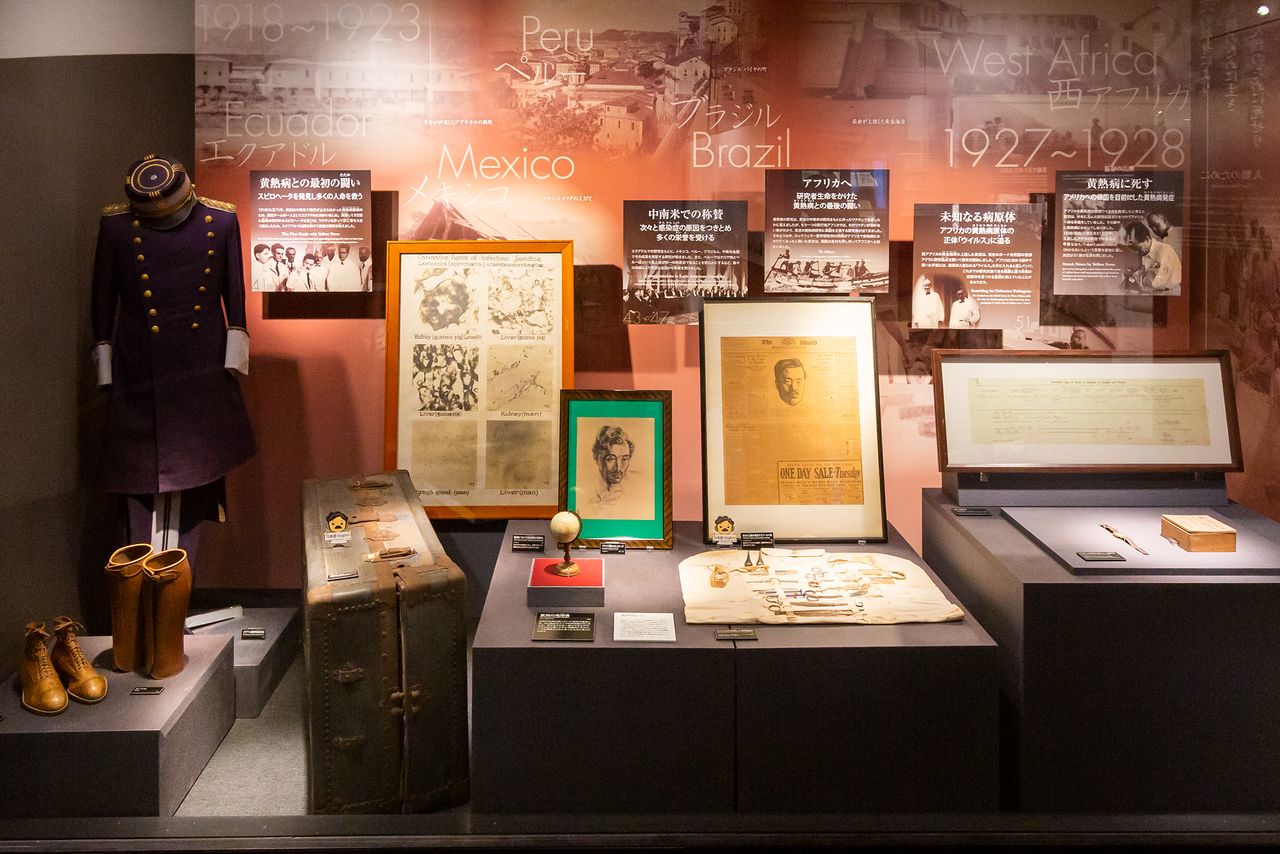
Noguchi’s work was hailed in South America; in Ecuador he was named an honorary colonel of the army.
In 1927, Noguchi traveled to Africa, despite opposition from people worried that the work was too dangerous for him. (Having never contracted yellow fever as a child, he had no immunity to it.) By the spring of the following year he had confirmed that his bacteriological pathogen theory was incorrect. As he was preparing to return to New York and continue his research there, he was infected with the dreaded disease. In a hospital in Accra, Ghana, he passed away at the age of 51.
In the end, it became clear that Noguchi’s vaccine had been effective against the bacterium causing Weil’s disease (leptospirosis), whose symptoms are similar to those of yellow fever. The latter disease is spread by mosquitos and caused by a virus, not a bacterium—a pathogen far too small to be detected with the optical microscopes of Noguchi’s time. It was only after his death that virology made serious advances, especially with the development of the electron microscope. If he had not been felled in Africa, he may well have gone on to achieve fresh discoveries in this next phase of medical science, too.

Photos from Noguchi’s funeral in New York and a replica of his tombstone, which stands in Woodlawn Cemetery.
A Man of Ceaseless Curiosity
Noguchi’s tale—that of a man who faced tremendous adversity to become one of the first Japanese scientists to make his mark on the world stage in the modern era—continues to draw admirers to this day.
Glimpses of the deep curiosity that drove him in his work can be seen in “The Real Hideyo,” a museum section re-creating the Shandaken, New York, home he shared with Mary Dardis, whom he married in 1912 at the age of 35. The walls are decorated with numerous paintings and calligraphic works by the scientist himself, and the stylish suit and boots on display hint at the passions that guided him in his lifestyle. Noguchi was a lover of chess, fishing, and many other pastimes, testament to his bottomless curiosity.
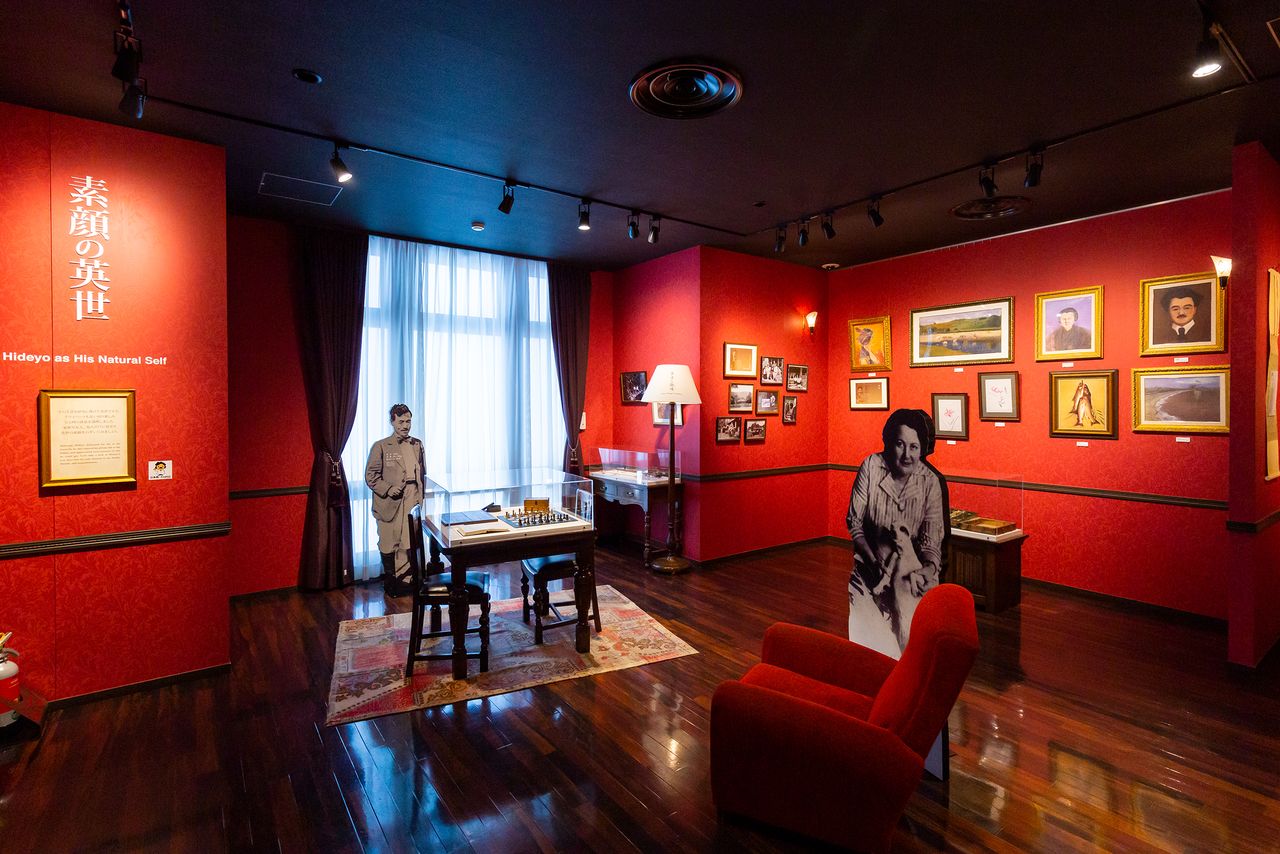
Paintings by Noguchi decorate the walls, and a favorite chess board sits on the table, ready for a match.
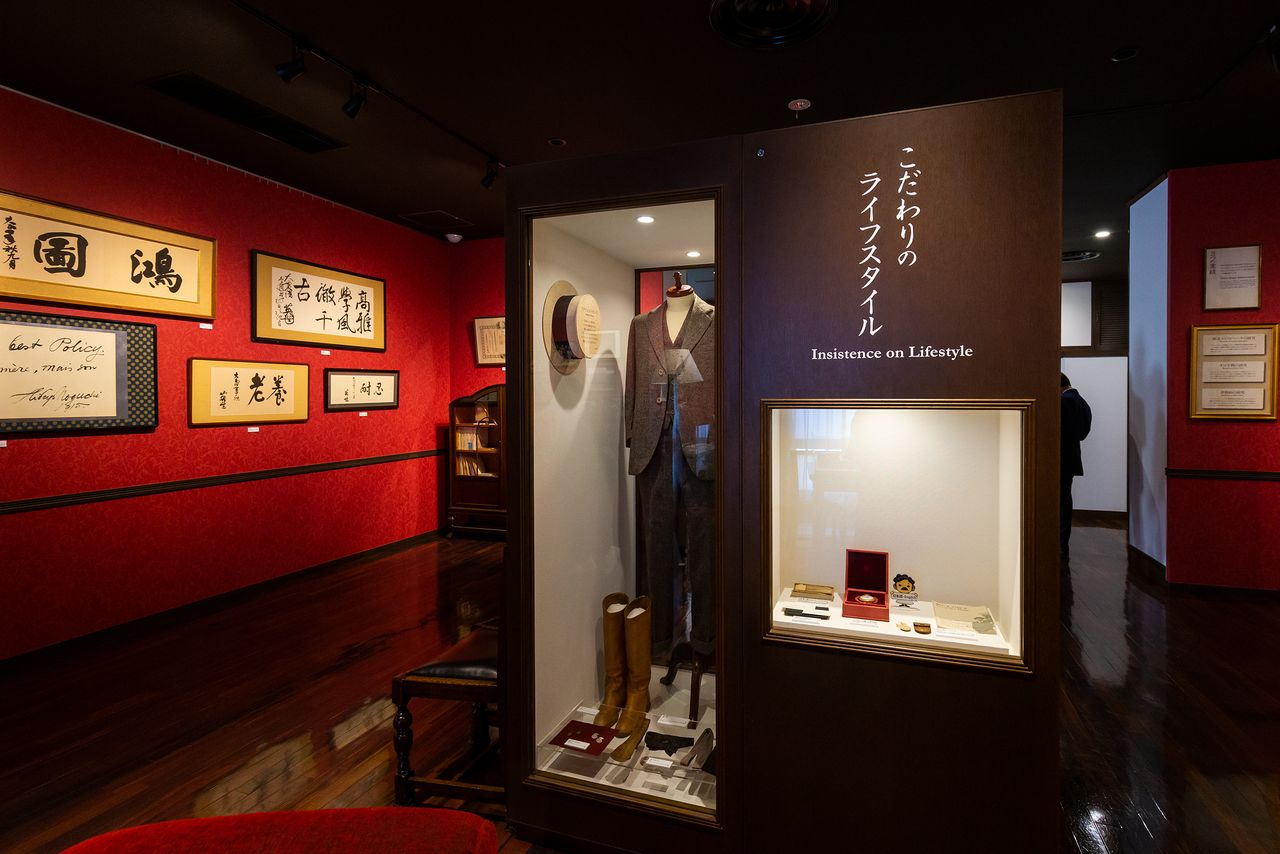
Fascinated by new things and a follower of fashion, Noguchi wore stylish suits and boots and was a dedicated user of dental floss. On the wall at left are calligraphic works he wrote himself.
The museum’s Morita Teppei explains: “We redesigned the exhibits in 2015 with an eye to making them more accessible to elementary-school-age visitors from inside Japan, along with tourists from abroad.” The bold design of the museum’s interior spaces focus attention nicely on the objects on display, and English-language explanations are plentiful. An especially popular stop among younger visitors is the robotic Noguchi Hideyo, which sits in “The Doctor’s Laboratory” and answers questions about the scientist and his life.
Noguchi has appeared on the thousand-yen note since 2004. In 2024 he will be replaced there by one of his benefactors, Kitasato Shibasaburō—a fitting way to keep the public mind on the field of infectious disease, where both of these notable men were active, in the COVID-19 era.
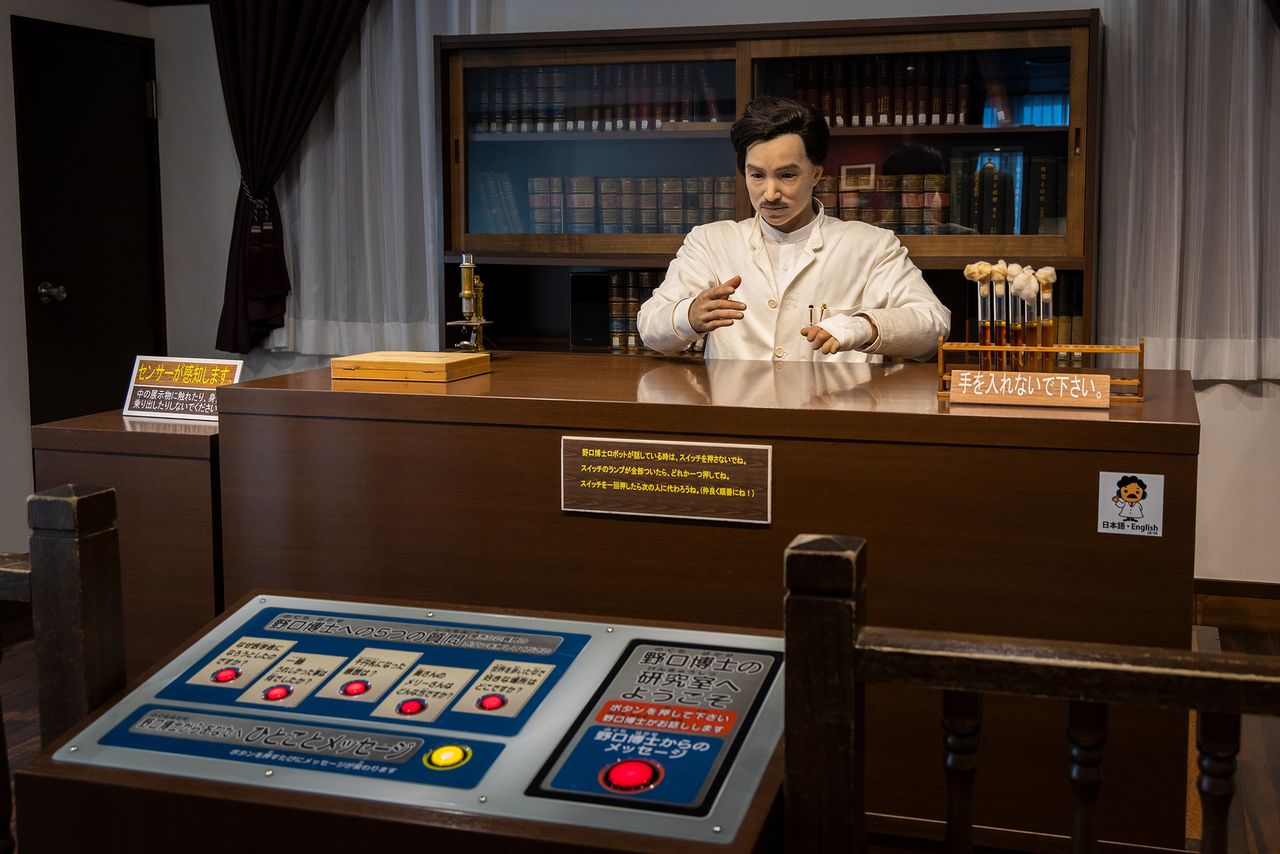
The Noguchi robot answers visitors’ questions with plenty of natural expressions and motions.
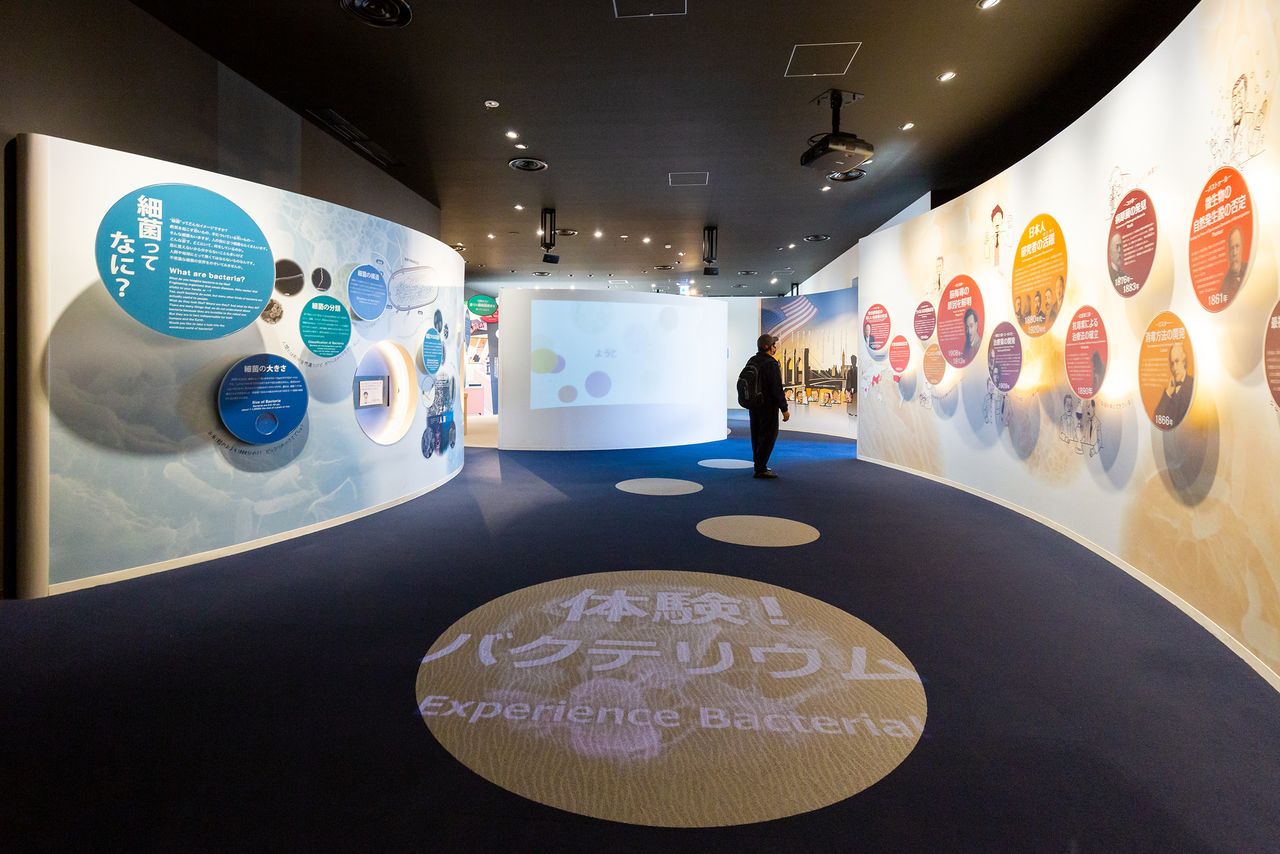
A scientific section of the museum shares basic information on bacteria and the history of infectious disease research.
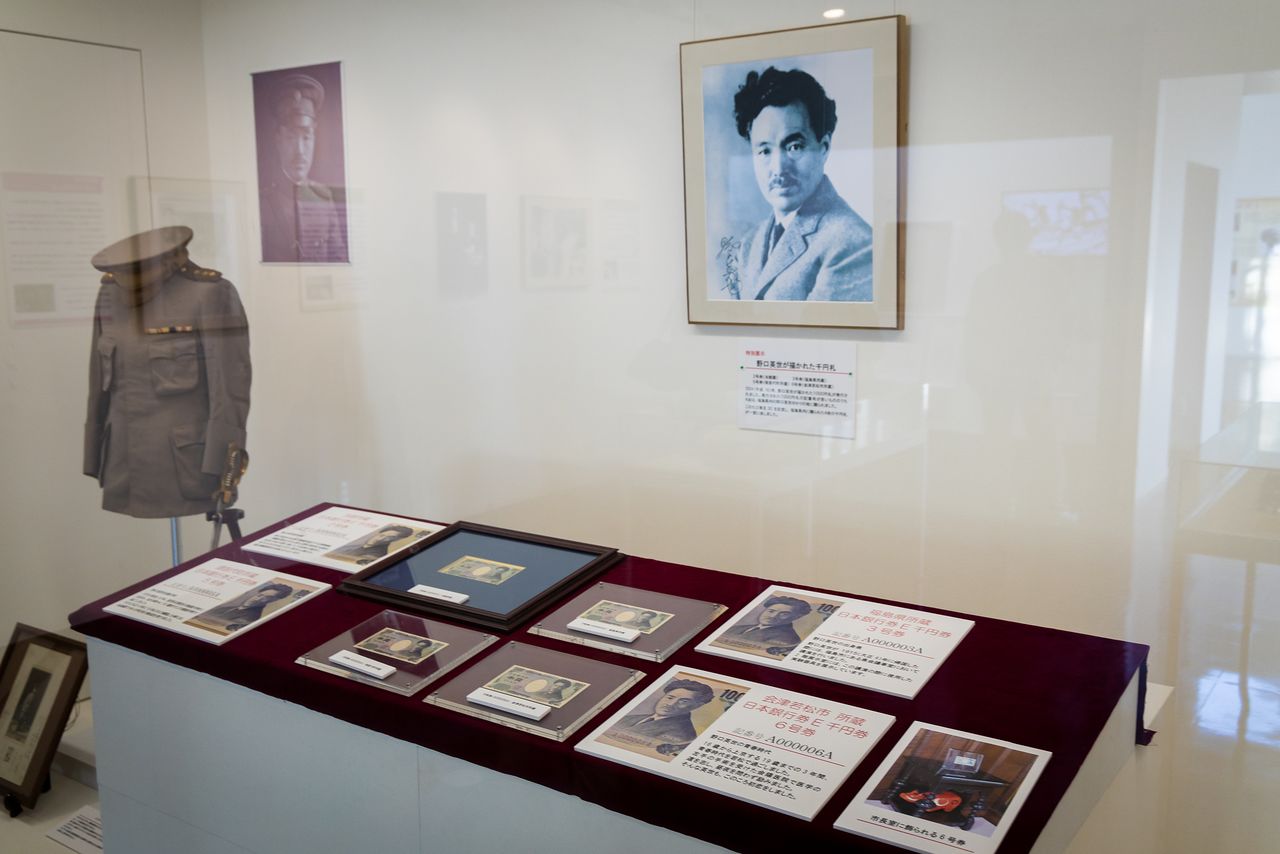
The photograph that was the basis for the portrait on the thousand-yen note is part of an exhibit on the currency.
Hideyo Noguchi Memorial Museum
- Address: 81 Mitsuwa Maeda, Inawashiro, Fukushima Prefecture
- Open daily, 09:00–17:30 (April through October), 09:00–16:30 (November through March); last admission 30 minutes before closing
- Closed December 29 through January 3
- Admission: Adults ¥800, elementary and junior high school students ¥400
(Originally published in Japanese. Reporting, text, and photos by Nippon.com. Banner photo: A bust of Noguchi donated by the Rockefeller Institute stands before the researcher’s original home.)
Fukushima museum medicine Noguchi Hideyo Inawashiro scientist